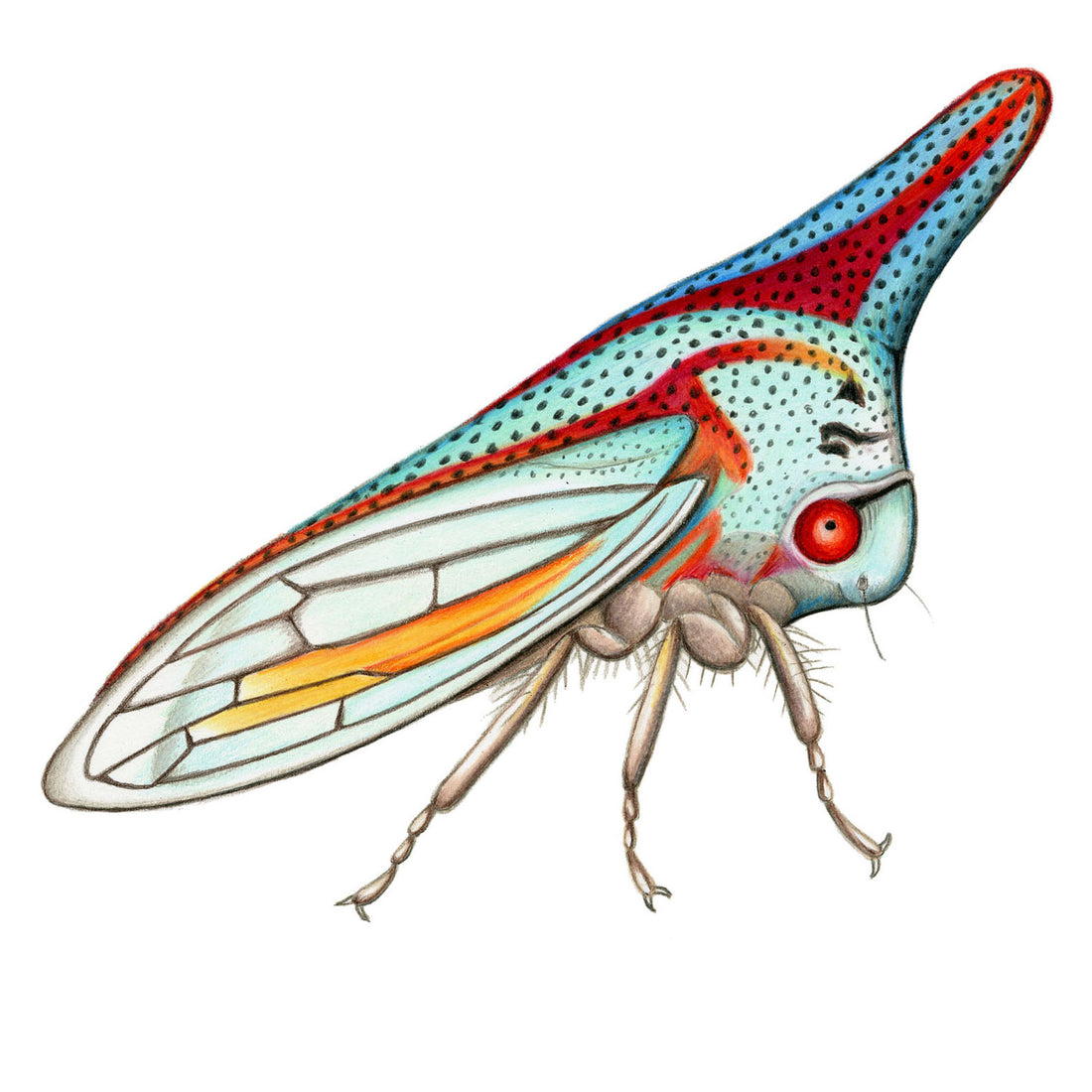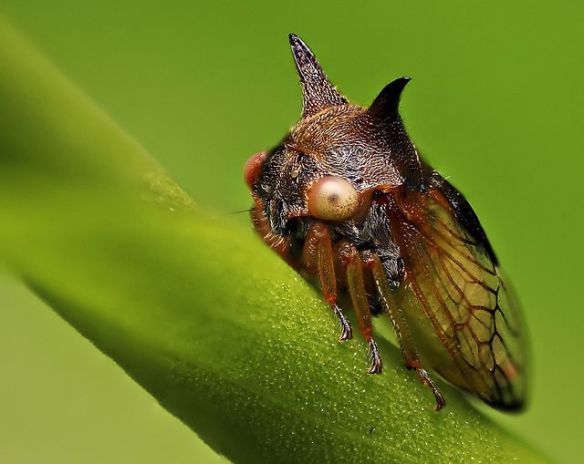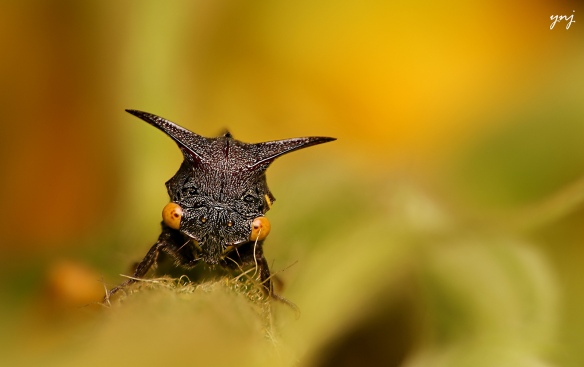Take a stroll through nature on a sunny day and you might hear a variety of birds calling, bees buzzing, goats yelling, and squirrels making squirrly noises. But what you probably won’t hear is this little guy talking to his friends:
Treehoppers (family Membracidae), are actually quite social. But instead of shouting, “Hey you!” or “Watch out for that spider!”, treehoppers talk to each other by vibrating the plants they live on, an almost otherworldy form of communication that some scientists have called a secret society of sound.
While vibrations might seem like a strange way of communicating, in fact many reptiles, birds, and even a few mammals (elephants included!), have been found using the same technique. A particularly large percentage of insect species communicate via vibrations as well, but treehoppers, small and dorkily camouflaged like thorns, are a fascinating group.
Finding them is hard enough, since they are most likely to be mistaken for thorns, if they are even seen at all. But getting a glimpse into their mysterious world is even more challenging.
The vibrations this produces are quite low in frequency, often below the threshold of human hearing.
But fortunately, there are some wonderful people in the world, like Rex Cocroft, a researcher and professor at the University of Missouri, Columbia, who has found a way to tap into this vibrational soundscape. Using a hairclip, he is able to attach phonograph needles and laser vibrometers (which can measure vibrations based on reflected light…don’t ask me how!), to a plant. Once recorded, the signals can be played back as airborne sounds. So now, at long last, we can actually listen to some treehopper conversations.

(Illustration by Rachel Diaz-Bastin)

Buffalo Treehopper: Stictocephala bisonia, Family Membracidae. (Photo by Brad Smith, Flickr)

“Halp!” Umbonia crassicornis nymph. Family Membracidae. (Photo by Carlos De Soto Molinari, Flickr)
A treehopper’s world is a hard place to imagine. Not only are they talking to each other most of the time via vibrational signals, they also live in a complex environment where natural vibrations from wind and rain and other animals are common, and perhaps quite noisy. The howling wind, the creaking of old branches, the thud of heavy raindrops against leaves, even the songs of birds and the pitter patter of insect feet on plant stems. Treehoppers can likely hear (or feel), all of it. But there is still much to learn, and study, about these ancient insects.
According to Rex Cochroft, in a wonderful piece on the subject on NPR, “because forest leaves tremble, even with the sound that we make even when we speak, treehoppers have always been listening to us. We have just begun listening to them.”





